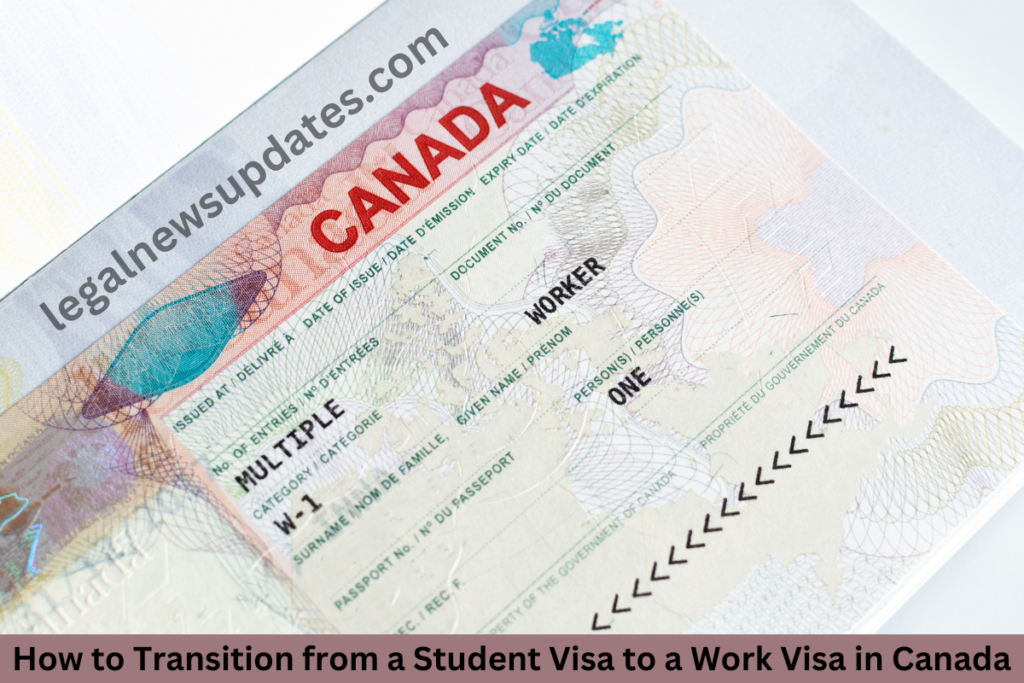Student to Work Visa Canada: Complete Guide

Student-to-Work Visa Canada:- Canada is renowned for its welcoming stance on immigration, offering numerous pathways for international students to transition into the workforce post-graduation. This blog aims to demystify the process of shifting from a student visa to a work visa, providing you with a clear roadmap and practical advice to navigate this pivotal phase. Whether you’re currently studying in Canada or planning to, understanding the transition process is crucial for seamless integration into the Canadian labor market and achieving your career aspirations.
Understanding Canadian Immigration Policies
Navigating the landscape of Canadian immigration policies is the first step for international students planning to transition from a student visa to a work visa. Canada’s immigration framework is designed to be welcoming to students and skilled workers from around the globe, recognizing the value they bring to the economy and the cultural diversity they contribute to society. For those looking to make this transition, understanding the types of work visas available and the pathways provided by Immigration, Refugees and Citizenship Canada (IRCC) is essential.
Types of Work Visas After Studying:
- Post-Graduation Work Permit (PGWP): The PGWP is one of the most sought-after work permits by international graduates in Canada. It allows students who have completed a program at a Canadian-designated learning institution to obtain an open work permit. This permit is incredibly flexible, as it does not restrict the graduate to a specific employer or location within Canada. The duration of the PGWP can vary from 8 months to 3 years, depending largely on the length of the academic program completed.
- Employer-Specific Work Permits: For those who secure a job offer before graduation, an employer-specific work permit might be a viable option. This type of permit requires the employer to obtain a Labour Market Impact Assessment (LMIA) in most cases, proving that no Canadian citizen or permanent resident is available to fill the position.
Eligibility Criteria for Transition
Transitioning from a student visa to a work visa in Canada requires careful planning and an understanding of the eligibility criteria set by Immigration, Refugees and Citizenship Canada (IRCC). These criteria are designed to ensure that international students transitioning to work visas are prepared to contribute to the Canadian economy and integrate into the workforce effectively.
General Eligibility Criteria for Work Visas:
- Completion of a Qualifying Program: To be eligible for the Post-Graduation Work Permit (PGWP), students must have completed a full-time program of at least 8 months in duration at a recognized Canadian post-secondary institution. This includes universities, colleges, and vocational schools.
- Application Timing: The application for a work visa, particularly the PGWP, must be submitted within 180 days of receiving written confirmation (such as an official transcript or a letter) from the educational institution that the program requirements have been met.
- Status in Canada: At the time of application, the student must hold a valid study permit, have had their study permit expire while they were waiting for their final marks, or have changed their status to a visitor before their study permit expired.
- Work During Study: Students are allowed to work on-campus or off-campus during their studies without an additional work permit. However, the ability to work is constrained by the conditions of the study permit, which typically allows for up to 20 hours of work per week during academic sessions and full-time during scheduled breaks.









1 thought on “Student to Work Visa Canada: Complete Guide”